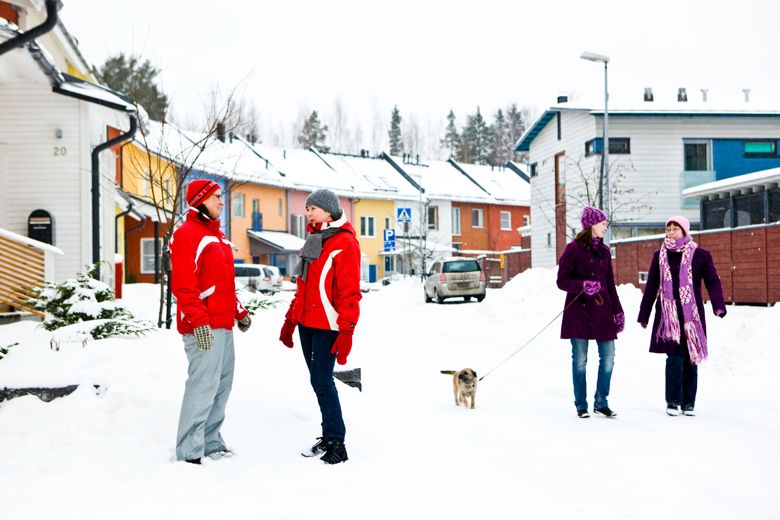Assess the air quality in your area

What kind of residential area do you live in?
- Air pollutant levels are usually highest in city centres.
- The further away the home is located from traffic, the cleaner the air.
- The use of fireplaces increases fine particle concentrations in detached house areas and can reduce the air quality from time to time.
- Construction sites also reduce the air quality in the surrounding area from time to time.
- Ship emissions and traffic to harbours can reduce the air quality in the surrounding area from time to time.
- Air pollutants can be better diluted in open environments. By the seaside, for example, the wind brings with it clean air.
Do you live near a busy road or street?
- Traffic emissions affect air quality. Traffic increases the quantity of fine particles, nitrogen dioxide and street dust. A road has a significant impact on the air quality in the surrounding area when it is used by more than 5,000 to 10,000 vehicles per day.
- Buildings prevent air pollutants from spreading to courtyards, but reduce the air quality on the street side. Openings and open points allow exhaust gases to be diluted.
- The air is cleaner in the courtyards and on the upper floors than in the street.
- Traffic emissions affect the environment up to a distance of 100–300 metres. Emissions are highest right next to a traffic route, and every metre further away from it improves the air quality.
- Traffic noise also indicates emissions. If the noise is bothersome, there are pollutants from traffic in the air as well.
- Traffic emissions are transported indoors. You can reduce your exposure by ventilating from the courtyard side and by influencing ventilation maintenance in your housing company.
- If your apartment opens only towards a busy street, avoid ventilation during peak hours or when the air quality is poor.
Is the air clean near your home?
- The wind transports pollutants and clears the air.
- The terrain affects the dispersion of pollutants. Pollutants accumulate in valleys and low-lying areas, especially in calm weather. Areas near the sea are well-ventilated and the wind clears the air.
What kind of ventilation do you have in your home?
- In new houses, the supply air intake is usually located high up and equipped with filtration. The filters commonly used in apartment buildings (F7) clean about half of the fine particles in the outdoor air.
- Old houses often have natural ventilation. In this case, local traffic emissions can enter the apartment unfiltered through ventilation valves and air leakage. You can reduce your exposure to air pollutants by ventilating your home from the side of the house with cleaner air and at times when there is less traffic. Efficient and well-maintained ventilation improves the quality of indoor air.
- An air purifier reduces the amount of fine particles in indoor air. Remember to service the appliance! Check that your air purifier does not produce ozone in the indoor air.
How to ensure good indoor air? (in Finnish),
Where do you exercise and move about outdoors?
- Choose a cleaner route by exercising further away from a busy street or road. Even just a block away from a busy area, the air is cleaner, and your exposure to fine particles, for example, is reduced by approximately 25%.
- Avoid strenuous physical exertion near busy roads and streets, as well as in areas where the air quality has deteriorated.